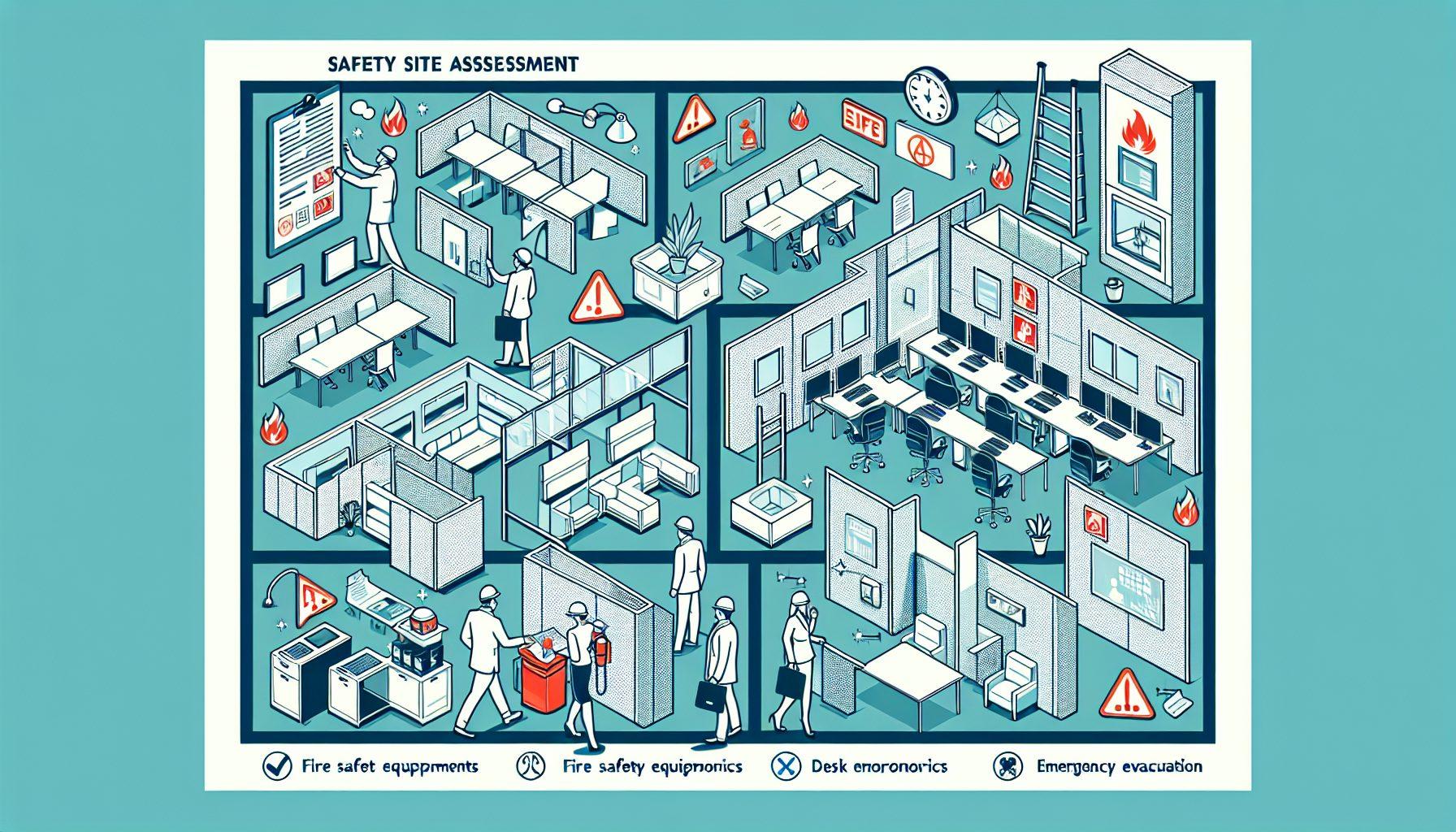Implementing a comprehensive safety site assessment for office spaces is essential to ensure the well-being of employees and create a secure working environment. By conducting regular assessments, businesses can identify potential hazards, assess risks, and implement corrective measures effectively. In this article, we will discuss the importance of safety site assessments and provide a step-by-step guide on how to conduct one for office spaces.
The Importance of Safety Site Assessments
Safety site assessments play a crucial role in maintaining a safe and healthy workplace. They help businesses identify and mitigate potential risks, ensure compliance with safety regulations, and create a culture of safety among employees. Here are some key reasons why safety site assessments are important:
- Identify hazards: By conducting a thorough assessment, businesses can identify potential hazards such as fire hazards, electrical issues, faulty equipment, or slip and fall risks. Identifying these hazards is the first step in effectively managing them and preventing accidents.
- Assess risks: Assessing risks associated with identified hazards is crucial to prioritize corrective measures. By evaluating the likelihood of an incident and its potential impact, businesses can determine the level of urgency in addressing the risks and allocate resources accordingly.
- Compliance with regulations: Safety site assessments help businesses ensure compliance with local and industry-specific safety regulations. Regular assessments can identify areas where improvements are necessary to meet the required standards and avoid penalties or legal issues.
- Prevent accidents and injuries: By proactively addressing hazards and implementing necessary safety measures, businesses can significantly reduce the risk of accidents and injuries in the workplace. This not only protects employees but also helps maintain productivity and avoid costly downtime.
- Create a culture of safety: Regular safety site assessments send a clear message to employees that their well-being is a top priority. This helps create a culture of safety where employees feel valued and empowered to report any potential hazards or safety concerns.
How to Conduct a Safety Site Assessment for Office Spaces
Now that we understand the importance of safety site assessments, let’s dive into the step-by-step process of conducting one for office spaces:
Step 1: Form a Safety Assessment Team
Start by forming a dedicated safety assessment team consisting of individuals from different departments. This team should include representatives from management, facilities, operations, and safety departments. Having a diverse team ensures a comprehensive assessment and helps to gain different perspectives.
Step 2: Define Objectives and Scope
Clearly define the objectives and scope of the safety site assessment. Identify the specific areas or aspects of the office space that will be assessed, such as the physical environment, emergency preparedness, ergonomics, or safety protocols. This will help focus the assessment and ensure that nothing is overlooked.
Step 3: Develop an Assessment Checklist
Create a detailed checklist that covers all relevant safety aspects to be assessed. This checklist should include items related to fire safety, electrical systems, emergency exits, first aid provisions, ergonomic setups, ventilation systems, and any specific hazards related to the office layout or equipment used.
Once the checklist is developed, distribute copies to the safety assessment team and provide guidance on how to conduct the assessment effectively. Encourage team members to document their findings, take photographs if necessary, and note any observations or concerns.
Step 4: Conduct the Assessment
With the checklist in hand, the safety assessment team should conduct a thorough assessment of the office space. Each team member should be assigned specific areas or aspects to evaluate and document their findings. Encourage open communication among team members and prompt reporting of any safety concerns or hazards identified during the assessment.
During the assessment, pay close attention to potential hazards such as blocked emergency exits, malfunctioning fire alarms or extinguishers, frayed electrical cords, improper storage of flammable materials, slippery or uneven surfaces, poor lighting, or inadequate ventilation.
If any immediate safety risks are identified during the assessment, prioritize their resolution and inform the appropriate department or personnel to take prompt action.
Step 5: Analyze Findings and Develop Action Plan
Once the assessment is complete, gather the findings and analyze them collectively. Identify recurring issues or common hazards that need immediate attention and prioritize them accordingly. Consider the severity of risks, potential impact, and available resources while developing an action plan.
The action plan should include specific tasks, responsible parties, deadlines, and the necessary resources required to address each identified hazard or concern. It is crucial to involve relevant stakeholders, such as facilities management or safety committees, in the decision-making process.
Step 6: Implement Corrective Measures
Now that the action plan is in place, it’s time to implement the corrective measures. Ensure that the responsible parties are aware of their tasks and deadlines. Provide necessary training or instructions to employees regarding updated safety protocols or procedures.
Collaborate with different departments to ensure smooth execution of the action plan. Regular follow-ups and communication are essential to monitor progress and address any challenges encountered during the implementation process.
Step 7: Regular Review and Assessment
Safety site assessments should not be a one-time activity. Regularly review and assess the office space to ensure ongoing compliance with safety standards and regulations. Schedule periodic assessments to identify and address new hazards or changing safety requirements.
Encourage employees to report any safety concerns or near misses they encounter during their day-to-day work. This continuous feedback loop helps improve the effectiveness of safety measures and ensures a safer working environment for all.
By following this step-by-step guide, businesses can implement a comprehensive safety site assessment for their office spaces. Regular assessments and ongoing improvements contribute to creating a safe and secure workplace where employees can thrive and productivity can flourish.
If your business has a warehouse operation and you’re in need of a safety site assessment, HCO Innovations can help. They specialize in optimizing warehouse operations through enhancing safety, productivity, efficiency, and cost-effectiveness. For more information, please visit their warehouse safety evaluation page.

